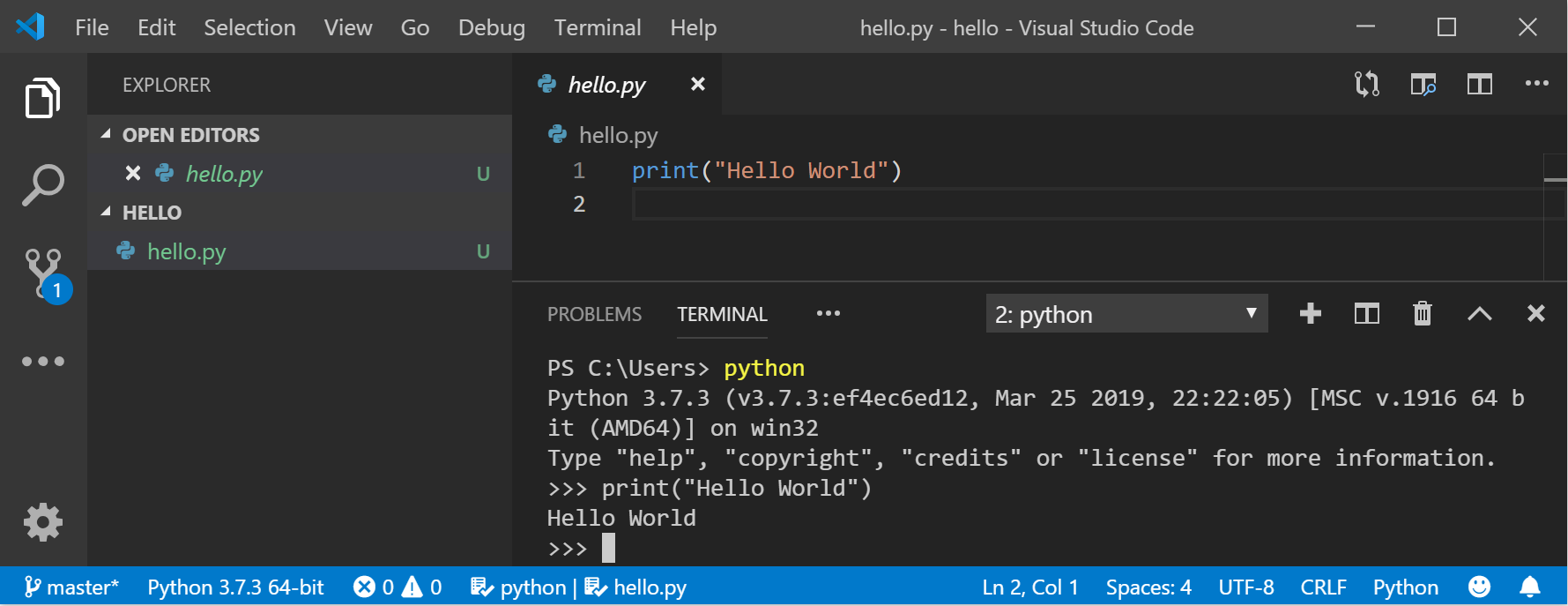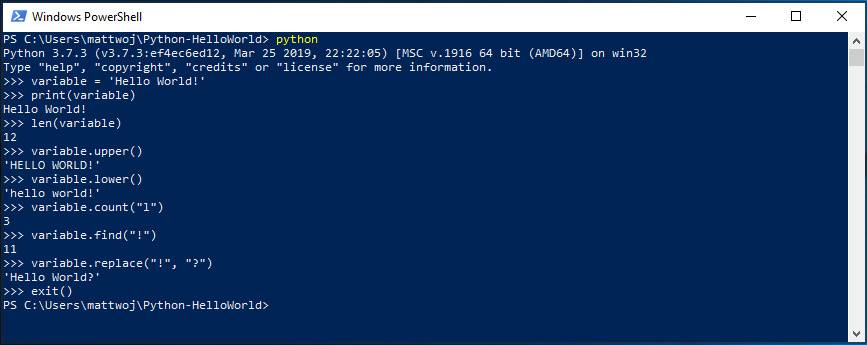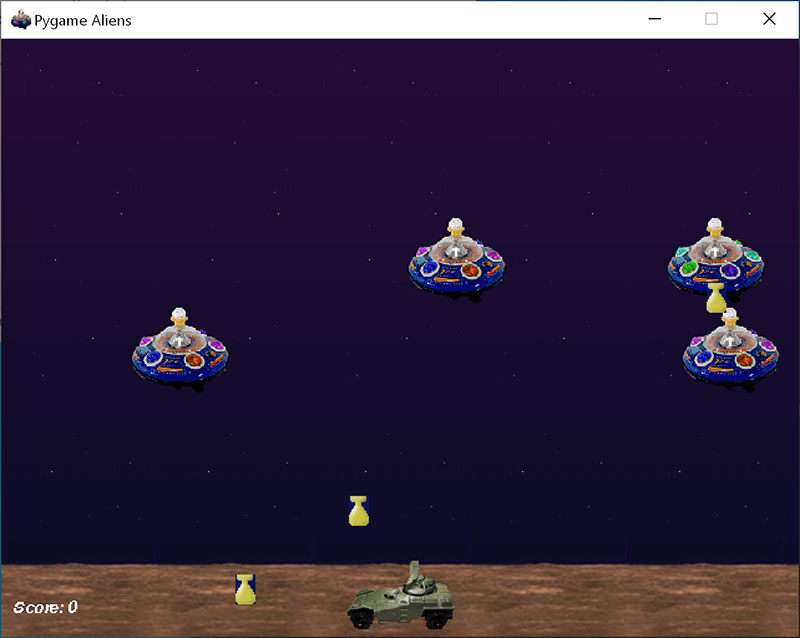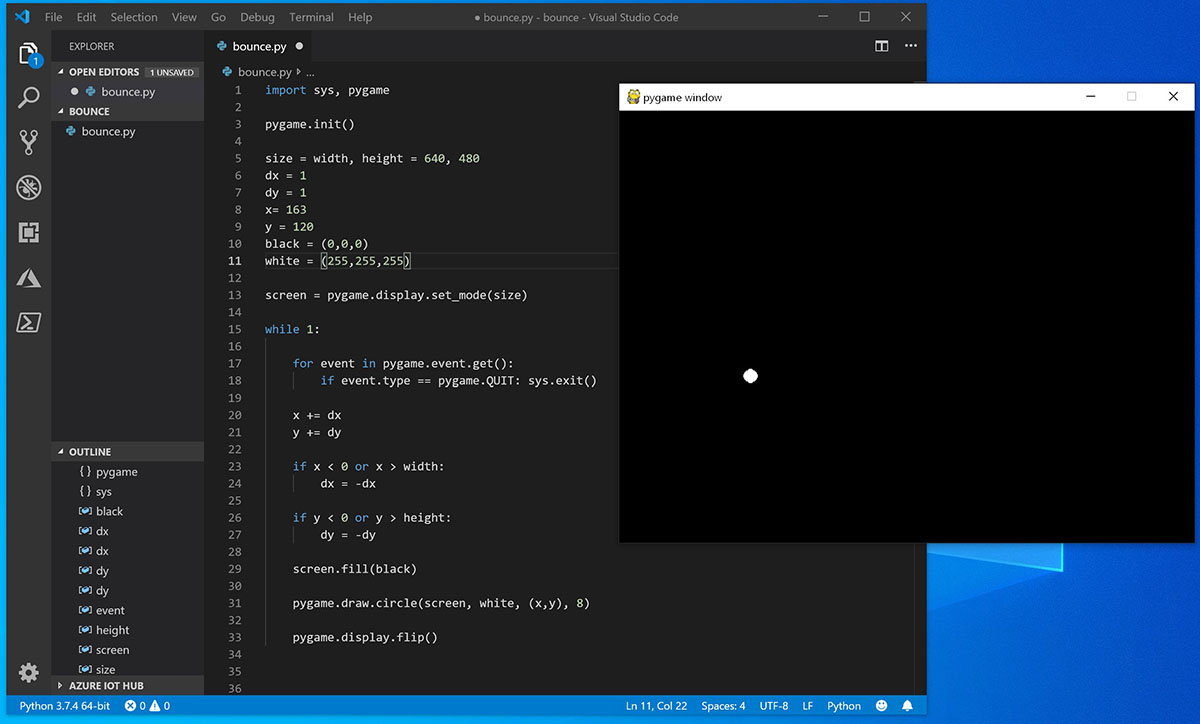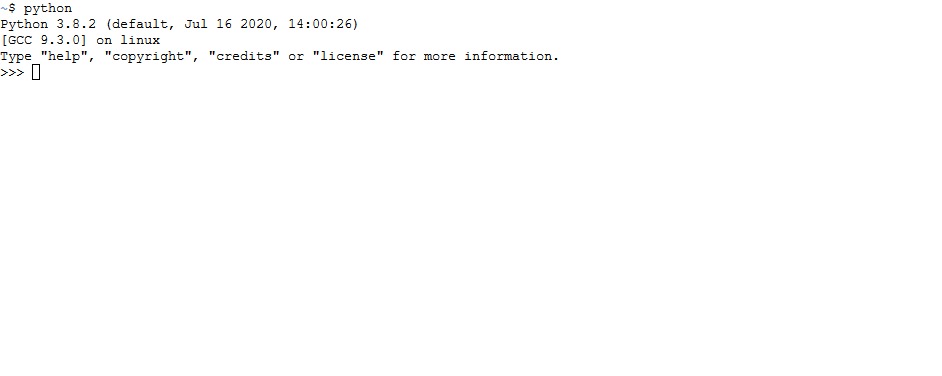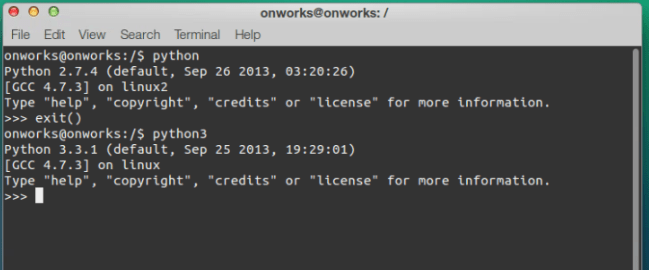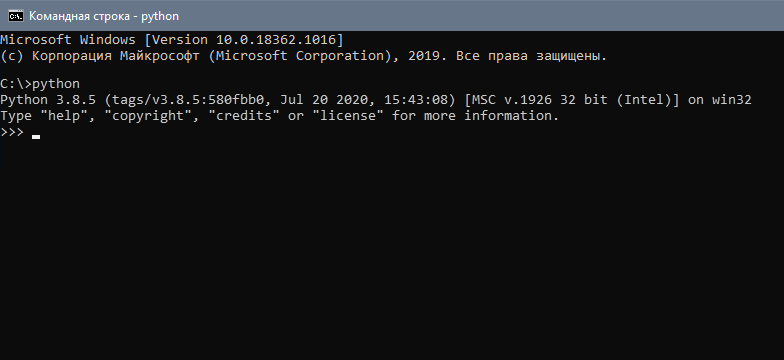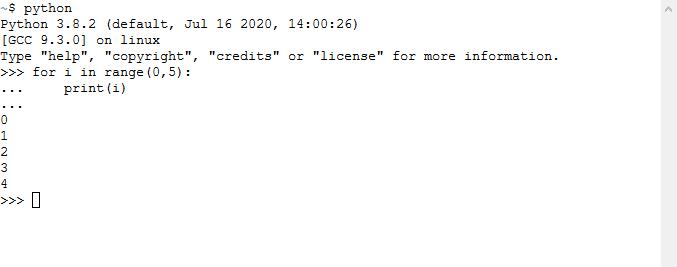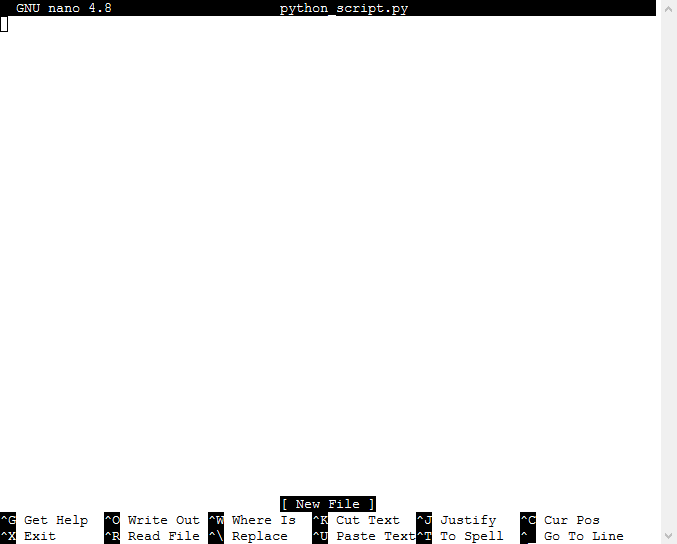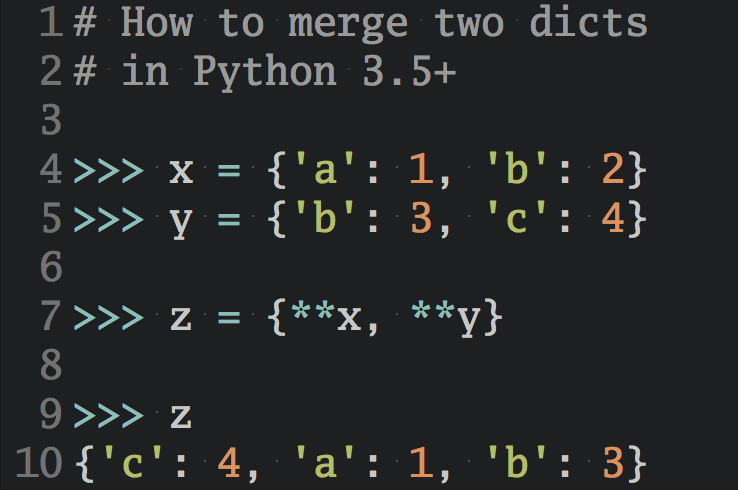How to run python script on windows
Get started using Python on Windows for beginners
The following is a step-by-step guide for beginners interested in learning Python using Windows 10.
Set up your development environment
For beginners who are new to Python, we recommend you install Python from the Microsoft Store. Installing via the Microsoft Store uses the basic Python3 interpreter, but handles set up of your PATH settings for the current user (avoiding the need for admin access), in addition to providing automatic updates. This is especially helpful if you are in an educational environment or a part of an organization that restricts permissions or administrative access on your machine.
If you are using Python on Windows for web development, we recommend a different set up for your development environment. Rather than installing directly on Windows, we recommend installing and using Python via the Windows Subsystem for Linux. For help, see: Get started using Python for web development on Windows. If you’re interested in automating common tasks on your operating system, see our guide: Get started using Python on Windows for scripting and automation. For some advanced scenarios (like needing to access/modify Python’s installed files, make copies of binaries, or use Python DLLs directly), you may want to consider downloading a specific Python release directly from python.org or consider installing an alternative, such as Anaconda, Jython, PyPy, WinPython, IronPython, etc. We only recommend this if you are a more advanced Python programmer with a specific reason for choosing an alternative implementation.
Install Python
To install Python using the Microsoft Store:
Go to your Start menu (lower left Windows icon), type «Microsoft Store», select the link to open the store.
Once the store is open, select Search from the upper-right menu and enter «Python». Open «Python 3.9» from the results under Apps. Select Get.
Install Visual Studio Code
By using VS Code as your text editor / integrated development environment (IDE), you can take advantage of IntelliSense (a code completion aid), Linting (helps avoid making errors in your code), Debug support (helps you find errors in your code after you run it), Code snippets (templates for small reusable code blocks), and Unit testing (testing your code’s interface with different types of input).
VS Code also contains a built-in terminal that enables you to open a Python command line with Windows Command prompt, PowerShell, or whatever you prefer, establishing a seamless workflow between your code editor and command line.
To install VS Code, download VS Code for Windows: https://code.visualstudio.com.
Once VS Code has been installed, you must also install the Python extension. To install the Python extension, you can select the VS Code Marketplace link or open VS Code and search for Python in the extensions menu (Ctrl+Shift+X).
Python is an interpreted language, and in order to run Python code, you must tell VS Code which interpreter to use. We recommend sticking with Python 3.7 unless you have a specific reason for choosing something different. Once you’ve installed the Python extension, select a Python 3 interpreter by opening the Command Palette (Ctrl+Shift+P), start typing the command Python: Select Interpreter to search, then select the command. You can also use the Select Python Environment option on the bottom Status Bar if available (it may already show a selected interpreter). The command presents a list of available interpreters that VS Code can find automatically, including virtual environments. If you don’t see the desired interpreter, see Configuring Python environments.
To open the terminal in VS Code, select View > Terminal, or alternatively use the shortcut Ctrl+` (using the backtick character). The default terminal is PowerShell.
Inside your VS Code terminal, open Python by simply entering the command: python
Install Git (optional)
If you plan to collaborate with others on your Python code, or host your project on an open-source site (like GitHub), VS Code supports version control with Git. The Source Control tab in VS Code tracks all of your changes and has common Git commands (add, commit, push, pull) built right into the UI. You first need to install Git to power the Source Control panel.
Download and install Git for Windows from the git-scm website.
An Install Wizard is included that will ask you a series of questions about settings for your Git installation. We recommend using all of the default settings, unless you have a specific reason for changing something.
If you’ve never worked with Git before, GitHub Guides can help you get started.
Hello World tutorial for some Python basics
Python, according to its creator Guido van Rossum, is a “high-level programming language, and its core design philosophy is all about code readability and a syntax which allows programmers to express concepts in a few lines of code.”
Python is an interpreted language. In contrast to compiled languages, in which the code you write needs to be translated into machine code in order to be run by your computer’s processor, Python code is passed straight to an interpreter and run directly. You just type in your code and run it. Let’s try it!
Hope you had fun using some of Python’s built-in string modification methods. Now try creating a Python program file and running it with VS Code.
Hello World tutorial for using Python with VS Code
The VS Code team has put together a great Getting Started with Python tutorial walking through how to create a Hello World program with Python, run the program file, configure and run the debugger, and install packages like matplotlib and numpy to create a graphical plot inside a virtual environment.
Open PowerShell and create an empty folder called «hello», navigate into this folder, and open it in VS Code:
Continue the tutorial in the VS Code docs: Create a Python Hello World source code file.
Create a simple game with Pygame
All being well, the game will open a window. Close the window when you are done playing.
Here’s how to start writing your own game.
Open PowerShell (or Windows Command Prompt) and create an empty folder called «bounce». Navigate to this folder and create a file named «bounce.py». Open the folder in VS Code:
Using VS Code, enter the following Python code (or copy and paste it):
Try adjusting some of the numbers to see what effect they have on your bouncing ball.
Read more about writing games with pygame at pygame.org.
Resources for continued learning
We recommend the following resources to support you in continuing to learn about Python development on Windows.
Online courses for learning Python
Introduction to Python on Microsoft Learn: Try the interactive Microsoft Learn platform and earn experience points for completing this module covering the basics on how to write basic Python code, declare variables, and work with console input and output. The interactive sandbox environment makes this a great place to start for folks who don’t have their Python development environment set up yet.
Python on Pluralsight: 8 Courses, 29 Hours: The Python learning path on Pluralsight offers online courses covering a variety of topics related to Python, including a tool to measure your skill and find your gaps.
LearnPython.org Tutorials: Get started on learning Python without needing to install or set anything up with these free interactive Python tutorials from the folks at DataCamp.
The Python.org Tutorials: Introduces the reader informally to the basic concepts and features of the Python language and system.
Learning Python on Lynda.com: A basic introduction to Python.
Working with Python in VS Code
Editing Python in VS Code: Learn more about how to take advantage of VS Code’s autocomplete and IntelliSense support for Python, including how to customize their behavior. or just turn them off.
Linting Python: Linting is the process of running a program that will analyse code for potential errors. Learn about the different forms of linting support VS Code provides for Python and how to set it up.
Debugging Python: Debugging is the process of identifying and removing errors from a computer program. This article covers how to initialize and configure debugging for Python with VS Code, how to set and validate breakpoints, attach a local script, perform debugging for different app types or on a remote computer, and some basic troubleshooting.
Unit testing Python: Covers some background explaining what unit testing means, an example walkthrough, enabling a test framework, creating and running your tests, debugging tests, and test configuration settings.
Python on Windows FAQ¶
How do I run a Python program under Windows?В¶
This is not necessarily a straightforward question. If you are already familiar with running programs from the Windows command line then everything will seem obvious; otherwise, you might need a little more guidance.
The letter may be different, and there might be other things after it, so you might just as easily see something like:
depending on how your computer has been set up and what else you have recently done with it. Once you have started such a window, you are well on the way to running Python programs.
You need to realize that your Python scripts have to be processed by another program called the Python interpreter. The interpreter reads your script, compiles it into bytecodes, and then executes the bytecodes to run your program. So, how do you arrange for the interpreter to handle your Python?
First, you need to make sure that your command window recognises the word “py” as an instruction to start the interpreter. If you have opened a command window, you should try entering the command py and hitting return:
You should then see something like:
You have started the interpreter in “interactive mode”. That means you can enter Python statements or expressions interactively and have them executed or evaluated while you wait. This is one of Python’s strongest features. Check it by entering a few expressions of your choice and seeing the results:
You may also find that you have a Start-menu entry such as Start ‣ Programs ‣ Python 3.x ‣ Python (command line) that results in you seeing the >>> prompt in a new window. If so, the window will disappear after you call the exit() function or enter the Ctrl-Z character; Windows is running a single “python” command in the window, and closes it when you terminate the interpreter.
So now you’ll ask the py command to give your script to Python by typing py followed by your script path:
How do I make Python scripts executable?В¶
Why does Python sometimes take so long to start?В¶
Usually Python starts very quickly on Windows, but occasionally there are bug reports that Python suddenly begins to take a long time to start up. This is made even more puzzling because Python will work fine on other Windows systems which appear to be configured identically.
The problem may be caused by a misconfiguration of virus checking software on the problem machine. Some virus scanners have been known to introduce startup overhead of two orders of magnitude when the scanner is configured to monitor all reads from the filesystem. Try checking the configuration of virus scanning software on your systems to ensure that they are indeed configured identically. McAfee, when configured to scan all file system read activity, is a particular offender.
How do I make an executable from a Python script?В¶
See cx_Freeze for a distutils extension that allows you to create console and GUI executables from Python code. py2exe, the most popular extension for building Python 2.x-based executables, does not yet support Python 3 but a version that does is in development.
Is a *.pyd file the same as a DLL?В¶
How can I embed Python into a Windows application?В¶
Embedding the Python interpreter in a Windows app can be summarized as follows:
SWIG will create an init function (a C function) whose name depends on the name of the extension module. For example, if the name of the module is leo, the init function will be called initleo(). If you use SWIG shadow classes, as you should, the init function will be called initleoc(). This initializes a mostly hidden helper class used by the shadow class.
In short, you can use the following code to initialize the Python interpreter with your extension module.
There are two problems with Python’s C API which will become apparent if you use a compiler other than MSVC, the compiler used to build pythonNN.dll.
Problem 1: The so-called “Very High Level” functions that take FILE * arguments will not work in a multi-compiler environment because each compiler’s notion of a struct FILE will be different. From an implementation standpoint these are very _low_ level functions.
Problem 2: SWIG generates the following code when generating wrappers to void functions:
Alas, Py_None is a macro that expands to a reference to a complex data structure called _Py_NoneStruct inside pythonNN.dll. Again, this code will fail in a mult-compiler environment. Replace such code by:
It may be possible to use SWIG’s %typemap command to make the change automatically, though I have not been able to get this to work (I’m a complete SWIG newbie).
Using a Python shell script to put up a Python interpreter window from inside your Windows app is not a good idea; the resulting window will be independent of your app’s windowing system. Rather, you (or the wxPythonWindow class) should create a “native” interpreter window. It is easy to connect that window to the Python interpreter. You can redirect Python’s i/o to _any_ object that supports read and write, so all you need is a Python object (defined in your extension module) that contains read() and write() methods.
How do I keep editors from inserting tabs into my Python source?В¶
The FAQ does not recommend using tabs, and the Python style guide, PEP 8, recommends 4 spaces for distributed Python code; this is also the Emacs python-mode default.
Python raises IndentationError or TabError if mixed tabs and spaces are causing problems in leading whitespace. You may also run the tabnanny module to check a directory tree in batch mode.
How do I check for a keypress without blocking?В¶
Use the msvcrt module. This is a standard Windows-specific extension module. It defines a function kbhit() which checks whether a keyboard hit is present, and getch() which gets one character without echoing it.
Запуск Python и python-скрипт на компьютере
Код, написанный на языке Python, может храниться в редакторе кода, IDE или файле. И он не будет работать, если не знать, как его правильно запускать.
В этом материале рассмотрим 7 способов запуска кода, написанного на Python. Они будут работать вне зависимости от операционной системы, среды Python или местоположения кода.
Где запускать Python-скрипты и как?
Python-код можно запустить одним из следующих способов:
Запуск Python-кода интерактивно
Для запуска интерактивной сессии нужно просто открыть терминал или командную строку и ввести python (или python3 в зависимости от версии). После нажатия Enter запустится интерактивный режим.
Вот как запустить интерактивный режим в разных ОС.
Интерактивный режим в Linux
Откройте терминал. Он должен выглядеть приблизительно вот так :
После нажатия Enter будет запущен интерактивный режим Python.
Интерактивный режим в macOS
На устройствах с macOS все работает похожим образом. Изображение ниже демонстрирует интерактивный режим в этой ОС.
Интерактивный режим в Windows
Запуск Python-скриптов в интерактивном режиме
В таком режиме можно писать код и исполнять его, чтобы получить желаемый результат или отчет об ошибке. Возьмем в качестве примера следующий цикл.
Для выхода из интерактивного режима нужно написать следующее:
И нажать Enter. Вы вернетесь в терминал, из которого и начинали.
Есть и другие способы остановки работы с интерактивным режимом Python. В Linux нужно нажать Ctrl + D, а в Windows — Ctrl + Z + Enter.
Стоит отметить, что при использовании этого режима Python-скрипты не сохраняются в локальный файл.
Как выполняются Python-скрипты?
Отличный способ представить, что происходит при выполнении Python-скрипта, — использовать диаграмму ниже. Этот блок представляет собой скрипт (или функцию) Python, а каждый внутренний блок — строка кода.
При запуске скрипта интерпретатор Python проходит сверху вниз, выполняя каждую из них. Именно таким образом происходит выполнение кода.
Но и это еще не все.
Блок-схема выполнения кода интерпретатором
Это набор инструкций, которые приводят к финальному результату.
Иногда полезно изучать байткод. Если вы планируете стать опытным Python-программистом, то важно уметь понимать его для написания качественного кода.
Это также пригодится для принятия решений в процессе. Можно обратить внимание на отдельные факторы и понять, почему определенные функции/структуры данных работают быстрее остальных.
Как запускать Python-скрипты?
Для запуска Python-скрипта с помощью командной строки сначала нужно сохранить код в локальный файл.
Возьмем в качестве примера файл, который был сохранен как python_script.py. Сохранить его можно вот так:
Сохранить скрипт в текстовом редакторе достаточно легко. Процесс ничем не отличается от сохранения простого текстового файла.
Но если использовать командную строку, то здесь нужны дополнительные шаги. Во-первых, в самом терминале нужно перейти в директорию, где должен быть сохранен файл. Оказавшись в нужной папке, следует выполнить следующую команду (на linux):
После нажатия Enter откроется интерфейс командной строки, который выглядит приблизительно следующим образом:
Теперь можно писать код и с легкостью сохранять его прямо в командной строке.
Как запускать скрипт в командной строке?
How to Run Your Python Scripts
Watch Now This tutorial has a related video course created by the Real Python team. Watch it together with the written tutorial to deepen your understanding: Running Python Scripts
One of the most important skills you need to build as a Python developer is to be able to run Python scripts and code. This is going to be the only way for you to know if your code works as you planned. It’s even the only way of knowing if your code works at all!
This step-by-step tutorial will guide you through a series of ways to run Python scripts, depending on your environment, platform, needs, and skills as a programmer.
You’ll have the opportunity to learn how to run Python scripts by using:
This way, you’ll get the knowledge and skills you’ll need to make your development cycle more productive and flexible.
Free Download: Get a sample chapter from Python Tricks: The Book that shows you Python’s best practices with simple examples you can apply instantly to write more beautiful + Pythonic code.
Take the Quiz: Test your knowledge with our interactive “How to Run Your Python Scripts” quiz. Upon completion you will receive a score so you can track your learning progress over time:
Scripts vs Modules
In computing, the word script is used to refer to a file containing a logical sequence of orders or a batch processing file. This is usually a simple program, stored in a plain text file.
Scripts are always processed by some kind of interpreter, which is responsible for executing each command sequentially.
A plain text file containing Python code that is intended to be directly executed by the user is usually called script, which is an informal term that means top-level program file.
On the other hand, a plain text file, which contains Python code that is designed to be imported and used from another Python file, is called module.
So, the main difference between a module and a script is that modules are meant to be imported, while scripts are made to be directly executed.
In either case, the important thing is to know how to run the Python code you write into your modules and scripts.
What’s the Python Interpreter?
Python is an excellent programming language that allows you to be productive in a wide variety of fields.
Python is also a piece of software called an interpreter. The interpreter is the program you’ll need to run Python code and scripts. Technically, the interpreter is a layer of software that works between your program and your computer hardware to get your code running.
Depending on the Python implementation you use, the interpreter can be:
Whatever form the interpreter takes, the code you write will always be run by this program. Therefore, the first condition to be able to run Python scripts is to have the interpreter correctly installed on your system.
The interpreter is able to run Python code in two different ways:
How to Run Python Code Interactively
Here’s an example of how to do this on Linux:
Now, you can write and run Python code as you wish, with the only drawback being that when you close the session, your code will be gone.
When you work interactively, every expression and statement you type in is evaluated and executed immediately:
An interactive session will allow you to test every piece of code you write, which makes it an awesome development tool and an excellent place to experiment with the language and test Python code on the fly.
To exit interactive mode, you can use one of the following options:
Note: The first rule of thumb to remember when using Python is that if you’re in doubt about what a piece of Python code does, then launch an interactive session and try it out to see what happens.
If you’ve never worked with the command-line or terminal, then you can try this:
On GNU/Linux (and other Unixes), there are several applications that give you access to the system command-line. Some of the most popular are xterm, Gnome Terminal, and Konsole. These are tools that run a shell or terminal like Bash, ksh, csh, and so on.
In this case, the path to these applications is much more varied and depends on the distribution and even on the desktop environment you use. So, you’ll need to read your system documentation.
On Mac OS X, you can access the system terminal from Applications → Utilities → Terminal.
How Does the Interpreter Run Python Scripts?
When you try to run Python scripts, a multi-step process begins. In this process the interpreter will:
Process the statements of your script in a sequential fashion
Compile the source code to an intermediate format known as bytecode
This bytecode is a translation of the code into a lower-level language that’s platform-independent. Its purpose is to optimize code execution. So, the next time the interpreter runs your code, it’ll bypass this compilation step.
Strictly speaking, this code optimization is only for modules (imported files), not for executable scripts.
Ship off the code for execution
At this point, something known as a Python Virtual Machine (PVM) comes into action. The PVM is the runtime engine of Python. It is a cycle that iterates over the instructions of your bytecode to run them one by one.
The PVM is not an isolated component of Python. It’s just part of the Python system you’ve installed on your machine. Technically, the PVM is the last step of what is called the Python interpreter.
The whole process to run Python scripts is known as the Python Execution Model.
Note: This description of the Python Execution Model corresponds to the core implementation of the language, that is, CPython. As this is not a language requirement, it may be subject to future changes.
How to Run Python Scripts Using the Command-Line
Python code files can be created with any plain text editor. If you are new to Python programming, you can try Sublime Text, which is a powerful and easy-to-use editor, but you can use any editor you like.
To keep moving forward in this tutorial, you’ll need to create a test script. Open your favorite text editor and write the following code:
Using the python Command
This is the most basic and practical way to run Python scripts.
Redirecting the Output
Sometimes it’s useful to save the output of a script for later analysis. Here’s how you can do that:
If output.txt doesn’t exist, then it’s automatically created. On the other hand, if the file already exists, then its contents will be replaced with the new output.
Note: module-name needs to be the name of a module object, not a string.
Using the Script Filename
On recent versions of Windows, it is possible to run Python scripts by simply entering the name of the file containing the code at the command prompt:
This is possible because Windows uses the system registry and the file association to determine which program to use for running a particular file.
For Python, this is a simple comment, but for the operating system, this line indicates what program must be used to run the file.
This line begins with the #! character combination, which is commonly called hash bang or shebang, and continues with the path to the interpreter.
There are two ways to specify the path to the interpreter:
This last option is useful if you bear in mind that not all Unix-like systems locate the interpreter in the same place.
Finally, to execute a script like this one, you need to assign execution permissions to it and then type in the filename at the command-line.
Here’s an example of how to do this:
With execution permissions and the shebang line properly configured, you can run the script by simply typing its filename at the command-line.
Finally, you need to note that if your script isn’t located at your current working directory, you’ll have to use the file path for this method to work correctly.
How to Run Python Scripts Interactively
It is also possible to run Python scripts and modules from an interactive session. This option offers you a variety of possibilities.
Taking Advantage of import
When you import a module, what really happens is that you load its contents for later access and use. The interesting thing about this process is that import runs the code as its final step.
When the module contains only classes, functions, variables, and constants definitions, you probably won’t be aware that the code was actually run, but when the module includes calls to functions, methods, or other statements that generate visible results, then you’ll witness its execution.
This provides you with another option to run Python scripts:
These two import operations do nothing, because Python knows that hello has already been imported.
There are some requirements for this method to work:
To know what’s in your current PMSP, you can run the following code:
Using importlib and imp
An important point to note here is that the argument of reload() has to be the name of a module object, not a string:
If you use a string as an argument, then reload() will raise a TypeError exception.
importlib.reload() comes in handy when you are modifying a module and want to test if your changes work, without leaving the current interactive session.
Using runpy.run_module() and runpy.run_path()
Here’s an example of how you can use it:
The module is located using a standard import mechanism and then executed on a fresh module namespace.
The file_path parameter must be a string and can refer to the following:
Hacking exec()
exec() provides an alternative way for running your scripts:
The above example is a little bit out there. It’s just a “hack” that shows you how versatile and flexible Python can be.
Using execfile() (Python 2.x Only)
The first argument of execfile() has to be a string containing the path to the file you want to run. Here’s an example:
Here, hello.py is parsed and evaluated as a sequence of Python statements.
How to Run Python Scripts From an IDE or a Text Editor
When developing larger and more complex applications, it is recommended that you use an integrated development environment (IDE) or an advanced text editor.
Most of these programs offer the possibility of running your scripts from inside the environment itself. It is common for them to include a Run or Build command, which is usually available from the tool bar or from the main menu.
Python’s standard distribution includes IDLE as the default IDE, and you can use it to write, debug, modify, and run your modules and scripts.
Other IDEs such as Eclipse-PyDev, PyCharm, Eric, and NetBeans also allow you to run Python scripts from inside the environment.
Advanced text editors like Sublime Text and Visual Studio Code also allow you to run your scripts.
To grasp the details of how to run Python scripts from your preferred IDE or editor, you can take a look at its documentation.
How to Run Python Scripts From a File Manager
Running a script by double-clicking on its icon in a file manager is another possible way to run your Python scripts. This option may not be widely used in the development stage, but it may be used when you release your code for production.
In order to be able to run your scripts with a double-click, you must satisfy some conditions that will depend on your operating system.
This trick has its drawbacks, though. For example, if your script has any error, the execution will be aborted before reaching the input() statement, and you still won’t be able to see the result.
On Unix-like systems, you’ll probably be able to run your scripts by double-clicking on them in your file manager. To achieve this, your script must have execution permissions, and you’ll need to use the shebang trick you’ve already seen. Likewise, you may not see any results on screen when it comes to command-line interface scripts.
Because the execution of scripts through double-click has several limitations and depends on many factors (such as the operating system, the file manager, execution permissions, file associations), it is recommended that you see it as a viable option for scripts already debugged and ready to go into production.
Conclusion
With the reading of this tutorial, you have acquired the knowledge and skills you need to be able to run Python scripts and code in several ways and in a variety of situations and development environments.
You are now able to run Python scripts from:
These skills will make your development process much faster, as well as more productive and flexible.
Take the Quiz: Test your knowledge with our interactive “How to Run Your Python Scripts” quiz. Upon completion you will receive a score so you can track your learning progress over time:
Watch Now This tutorial has a related video course created by the Real Python team. Watch it together with the written tutorial to deepen your understanding: Running Python Scripts
Get a short & sweet Python Trick delivered to your inbox every couple of days. No spam ever. Unsubscribe any time. Curated by the Real Python team.
About Leodanis Pozo Ramos

Leodanis is an industrial engineer who loves Python and software development. He’s a self-taught Python developer with 5+ years of experience.
Each tutorial at Real Python is created by a team of developers so that it meets our high quality standards. The team members who worked on this tutorial are:
Master Real-World Python Skills With Unlimited Access to Real Python
Join us and get access to hundreds of tutorials, hands-on video courses, and a community of expert Pythonistas:
Master Real-World Python Skills
With Unlimited Access to Real Python
Join us and get access to hundreds of tutorials, hands-on video courses, and a community of expert Pythonistas:
Real Python Comment Policy: The most useful comments are those written with the goal of learning from or helping out other readers—after reading the whole article and all the earlier comments. Complaints and insults generally won’t make the cut here.
What’s your #1 takeaway or favorite thing you learned? How are you going to put your newfound skills to use? Leave a comment below and let us know.
Related Tutorial Categories: basics python

